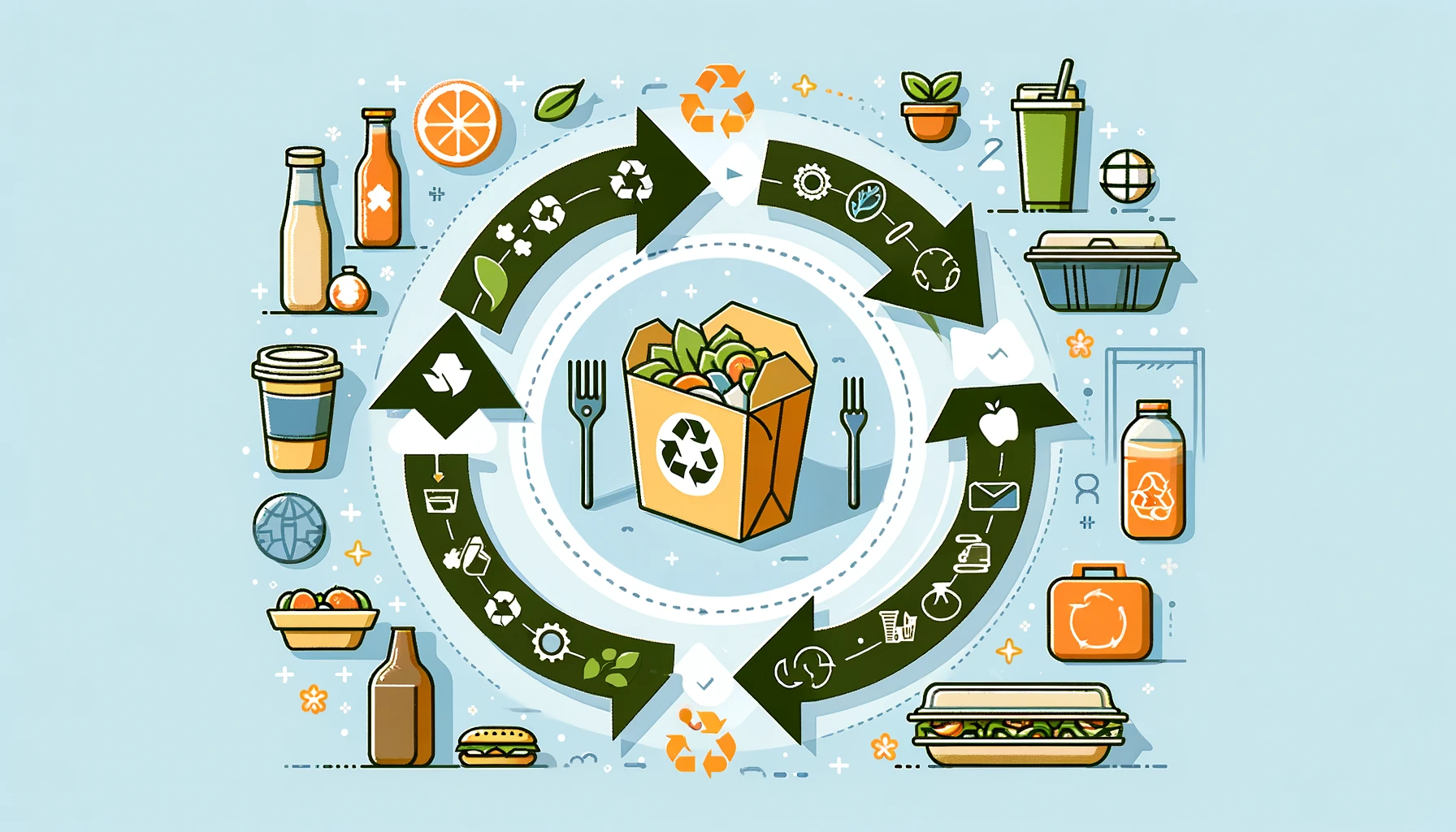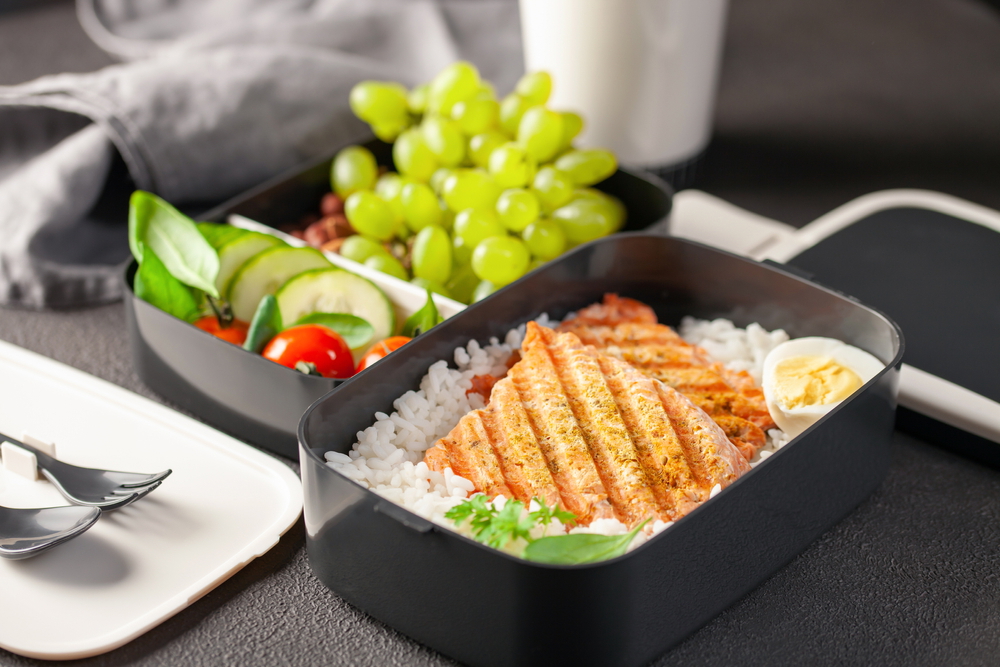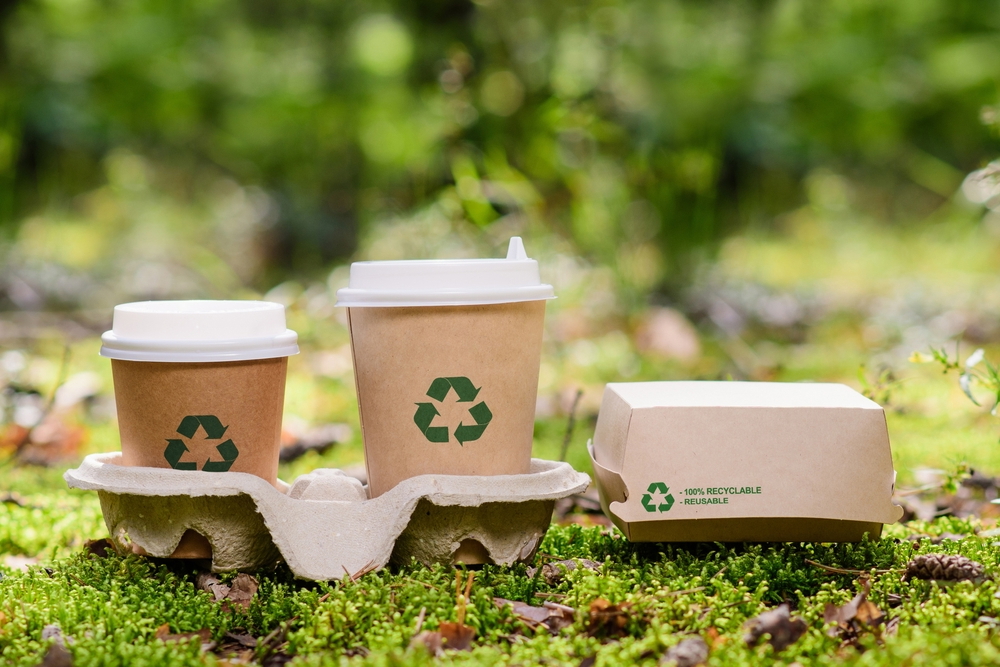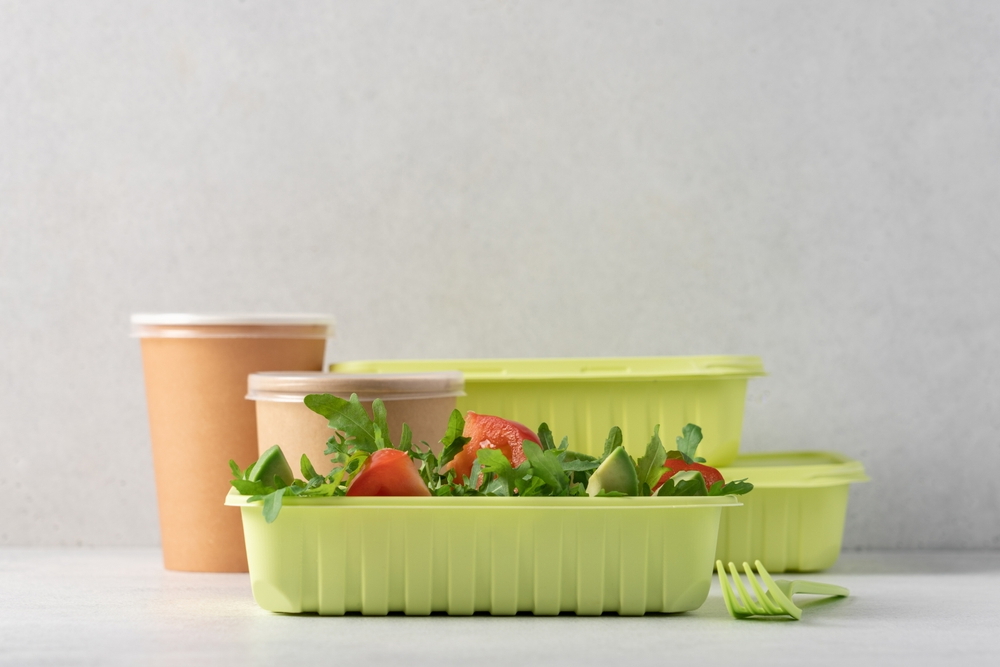Top Circular Economy Approaches to Takeaway Packaging
By Anttoni Taimela · 24. May 2024
How can businesses adopt circular economy approaches to takeaway packaging effectively?
Our article tackles this pressing question by uncovering the strategies, challenges, and innovations that are redefining sustainable packaging.
Without any fluff, we delve straight into the materials and models shaping the future of takeout containers.
Expect insights on biodegradable, compostable alternatives, and how the industry is moving towards circularity—one package at a time.
Redefining Takeaway Packaging in the Circular Economy 🍱
 circular economy approach to takeaway packaging
circular economy approach to takeaway packaging
Ah, the humble food container—so simple, yet so complex. It’s more than just a box to hold your lunch. It’s a symbol of our relationship with the environment.
Every day, millions of these containers are used once and then discarded, contributing to the growing problem of plastic pollution.
The circular economy is a game-changer in the takeaway packaging sector.
This concept is all about creating a closed-loop system where waste is minimised, and materials are kept in use for as long as possible.
A significant part of this approach involves rethinking the materials we use for packaging. After all, not all packaging is created equal.
Some materials are more sustainable than others and choosing the right one can make all the difference.
Now, no conversation about takeaway packaging would be complete without mentioning the giant elephant in the room—single-use plastics.
These pesky materials have been a mainstay in the food industry for years, but their environmental impact has made them increasingly unpopular.
Governments are implementing regulations to reduce the use of plastic food packaging, with the UK leading the charge by implementing a Plastic Packaging Tax.
But it’s not just about governmental pressure. Businesses are stepping up, too. Many food service businesses are introducing circular practices such as producing plant-based packaging, selecting reusables, and implementing organic recycling.
Companies like McDonald’s Europe and Loop are leading the way by switching to alternatives to single-use plastics.
However, this transition to a circular economy is not without challenges.
Most plastic packaging on the market is not designed to be recyclable in practice and at scale, creating a significant barrier to circular economy objectives.
Moreover, there can be unintended consequences in the shift towards sustainable materials, such as greater upfront environmental costs associated with the production and use of reusable containers.
But despite these challenges, the momentum towards a more sustainable takeaway packaging industry is undeniable.
From Linear to Circular: The Shift in Takeaway Containers
Ready to get into the nitty-gritty of the shift from linear to circular takeaway containers? Excellent! Let’s start with a concept called “Loop.”
And no, it’s not a typo. Loop is an initiative that exemplifies the transition to circular economy models in takeaway containers. But how does it work?
Loop is all about reuse. The idea is to create zero-waste, refillable packaging options that are designed to be returned, cleaned, and reused, creating a cycle that veers away from the single-use, throwaway culture.
Companies like Tesco are partnering with Loop to introduce this kind of packaging, showing tangible steps the retail sector is taking to embrace circular economy principles and reduce plastic waste.
This shift from a linear to a circular model is not just good for the environment—it’s good for business, too.
In the traditional linear economy, an estimated 95% of the value of plastic packaging material is lost to the economy annually.
By shifting to a circular model, businesses can capture this lost value, creating a more financially and environmentally efficient system.
Material Matters: Choosing Sustainable Packaging Options 🌱
Now that we’ve got a handle on the shift from linear to circular, let’s delve into the materials that make this possible. In the world of takeaway packaging, material matters.
The choice of packaging material can significantly impact the sustainability of a product.
Let’s take Kraft fast food packaging, for example. This packaging material is biodegradable and compostable, which means that it can break down naturally over time.
Plus, it’s resistant to water, grease, and oil, making it an ideal choice for takeaway food.
However, it’s not just about choosing a sustainable material—it’s also about understanding the different types of sustainable materials available.
For this, businesses often follow classification systems like those proposed by Petersen et al. (1999).
These systems provide a framework for selecting materials based on factors like biodegradability, compostability, and recyclability.
Unwrapping the Benefits of Reusable Food Containers 🍲
 healthy lunch office takeaway boxes
healthy lunch office takeaway boxes
Let’s shift gears a bit and talk about reusable food containers. You’ve probably heard the phrase “reduce, reuse, recycle.”
Well, in the world of takeaway packaging, “reusable” is the new buzzword. And for a good reason.
Reusable containers significantly reduce packaging waste, contributing to a more sustainable environment.
And it’s not just about the environment.
The adoption of reusable food containers in takeaways also supports operational effectiveness.
Imagine a food delivery service that uses reusable containers. Not only would this reduce waste, but it could also enhance efficiency by allowing for:
- Streamlined operations
- Faster order fulfilment
- Reduced packaging costs
- Improved customer satisfaction
Moreover, reusable packaging eliminates plastic waste and pollution, addressing negative environmental externalities.
Just think about all the single-use plastic containers that could be replaced with reusable ones.
By eliminating plastic packaging, that’s a lot of plastic waste that could be avoided!
Even better, switching to reusable containers offers reductions in greenhouse gas emissions.
This is because reusable containers often have shorter transport distances, which means less fossil fuel is burned during transportation.
Plus, reusable containers can last for years, so there’s less need to constantly produce new ones.
But perhaps one of the most significant benefits of reusable containers is their potential for innovation.
With reusable containers, the possibilities are virtually endless. Businesses can experiment with different designs, materials, and systems, all in the name of sustainability.
Challenges and Solutions in Adopting Reusables 💡
While the benefits of reusable containers are clear, it’s not all sunshine and rainbows.
Adopting reusable containers presents challenges, such as increased costs and logistical issues.
But don’t worry—we’re not here to rain on the reusable parade. Instead, let’s take a look at some of these challenges and the solutions being developed to overcome them.
First, there’s the cost issue. Both consumers and merchants often face increased costs when adopting reusable containers.
These costs come from not only the higher price point of reusable containers but also from the need for an initial investment in design, manufacturing, and system setup.
Then there’s the challenge of hygiene and safety. Ensuring high standards of hygiene and safety with reusable containers is crucial, especially for the food and healthcare industries which demand stringent cleanliness protocols. But fear not, solutions are being developed to address this issue.
Advanced cleaning and sanitising technologies are making it easier than ever to ensure that reusable containers meet the highest standards of cleanliness.
Lastly, there’s the issue of logistics. Adopting reusable containers brings about logistical challenges such as establishing efficient container return systems and forming partnerships to maintain a consistent circulation process.
But with collaboration and innovation, these challenges can be overcome.
Companies are developing efficient return systems and forming strategic partnerships to ensure that reusable containers can circulate effectively.
Innovations in Compostable Takeaway Solutions 🌿
 ecofriendly food packaging
ecofriendly food packaging
Let’s now turn our attention to the exciting world of compostable takeaway solutions.
Compostable packaging is a major player in the move towards a circular economy, preventing waste, promoting material circulation, and contributing to natural regeneration.
But what exactly is compostable packaging? Essentially, it’s packaging that can be safely broken down into water, CO2, and compost, supporting responsible waste management and reducing the reliance on non-compostable plastics.
This type of packaging aligns with circular economy principles by preventing waste and promoting material circulation.
So, what kind of materials are used in compostable packaging? Well, there’s a wide range to choose from—including bagasse from sugarcane, containers made from wheat straw or bamboo, and other plant-based containers designed to decompose into soil.
These materials are not only environmentally friendly but also practical, offering the durability and functionality needed for takeaway packaging.
One of the major advantages of compostable packaging is its ability to decompose into soil.
This means that instead of ending up in a landfill, compostable packaging can be returned to the earth, enriching the soil and supporting plant growth.
This completes the loop in the circular economy, turning waste into a valuable resource.
Another advantage of compostable packaging is its potential for innovation. Many companies are experimenting with new compostable materials, creating unique and sustainable packaging solutions.
This spirit of innovation is driving the growth of the compostable packaging market, opening up new opportunities for businesses and consumers alike.
Leading the Charge with Plant-Based Packaging 🌾
Plant-based packaging is leading the charge in the compostable packaging revolution. These innovative materials are not only sustainable but also offer unique properties that make them ideal for takeaway packaging.
Biopolymers like Polybutylene succinate (PBS) and polylactic acid (PLA) are also making waves in the plant-based packaging world.
These materials are synthesised from bio-derived monomers, offering a sustainable alternative to conventional plastics.
Another example of plant-based packaging innovation is the work being done by companies like Apeel.
Apeel is eliminating the need for plastic packaging by extending the shelf-life of produce, offering a unique solution to the problem of food waste.
Tackling Plastic Pollution with Biodegradable Alternatives 🌏
 recyclable food containers
recyclable food containers
Plastic pollution is a major issue facing our planet today. Annually, our oceans are the dumping grounds for millions of tonnes of plastic debris, wreaking havoc on marine life and tainting the pristine nature of our aquatic ecosystems.
But what if there was a way to reduce plastic pollution while still meeting our packaging needs? Enter biodegradable alternatives.
Biodegradable materials, often derived from virgin materials, are capable of being broken down by microorganisms, resulting in natural compounds that have a minimal impact on the environment.
This makes them a viable alternative to conventional plastics, which can take hundreds of years to decompose and often result in harmful pollution.
The food service industry is starting to catch on to the benefits of biodegradable alternatives. Many businesses are now incorporating these materials into their takeaway packaging, offering products like kraft fast food packaging and biodegradable cutlery.
These products offer the same functionality as their plastic counterparts, but without the environmental impact.
However, it’s not just about switching to biodegradable materials. It’s also about promoting a culture of responsibility and sustainability.
This involves educating consumers about the benefits of biodegradable alternatives and encouraging responsible disposal practices.
And let’s not forget about the role of innovation in tackling plastic pollution. Scientists and engineers are constantly developing new biodegradable materials and packaging solutions, pushing the boundaries of what’s possible in the quest for sustainability.
Understanding Biodegradable vs. Compostable Materials 🔄
When it comes to sustainable packaging, it’s important to understand the difference between biodegradable and compostable materials.
While these terms are often used interchangeably, they actually refer to different properties and capabilities.
When biodegradable materials are disposed of, they can be broken down into carbon dioxide, water, and biomass through the activity of microorganisms.
This property makes them environmentally friendly.
This process can vary in time frame, making the decomposition less predictable.
Biodegradable materials can break down in various environments, including landfills, compost piles, and even in the open environment.
Compostable materials, on the other hand, not only break down into non-toxic elements but must do so within a specific timeframe and under specific conditions.
These materials require an industrial composting facility that provides conditions like the right temperature and humidity to decompose effectively and consistently.
The decomposition process results in:
- CO2
- Water
- Inorganic compounds
- Biomass
The resulting biomass is often used as a nutrient-rich soil conditioner.
Understanding the differences between biodegradable and compostable materials is crucial for choosing the right packaging solution.
It helps businesses make informed decisions about their packaging materials and helps consumers understand how to properly dispose of these materials.
Circular Business Models: Pioneering Change in the Food Packaging Industry 🚀
Hoping to revolutionise the industry, circular business models are driving change in the food packaging industry.
These models focus on keeping resources in use for as long as possible, eliminating waste, and promoting resource regeneration.
A circular business model requires a shift in mindset. Instead of viewing packaging as a single-use item to be discarded after use, businesses need to view packaging as a valuable resource that can be reused, recycled, or composted.
This requires innovative thinking and a willingness to challenge the status quo.
It’s not just about the packaging itself, though. Businesses also need to ensure that their packaging is actually collected and processed after use.
This involves setting up collection systems, forming partnerships with recycling or composting facilities, and educating consumers about proper disposal practices.
The transition to a circular economy for plastic packaging involves:
- Eliminating problematic plastics
- Ensuring plastics are reusable, recyclable, or compostable
- Maintaining the circulation of all plastics within the economy
This requires a concerted effort from businesses, governments, and consumers alike.
Case Studies: Success Stories in Circular Packaging 📈
Let’s take a look at some success stories in circular packaging. These case studies showcase how businesses are adopting sustainable alternatives and achieving circular economy goals.
First up is BioPak, a company that’s designing circular economy packaging with plant-based materials. Their products can biodegrade and be composted, enriching the soil instead of contributing to waste.
Next is Lush, a beauty company that minimises packaging waste by selling solid products that do not require packaging. This package-free approach to circularity is a great example of how companies can challenge traditional norms and find innovative solutions to reduce waste.
Lastly, there’s Loop, a company that’s introduced a zero-waste, refillable packaging solution using durable materials like glass and stainless steel.
This reusable system offers a practical and sustainable alternative to single-use packaging.
Overcoming Barriers: Strategies for Transitioning to Circular Models 🛠️
Transitioning to circular models isn’t without its challenges. However, with the right strategies, businesses can overcome these barriers and make the shift towards more sustainable takeaway packaging options.
One major challenge is the impending UK ban on single-use plastic packaging.
This regulatory change is forcing businesses to comply with and anticipate shifts towards sustainable alternatives.
To overcome this barrier, businesses need to stay informed about regulatory changes and adapt their practices accordingly.
Another challenge is the need for collaboration and shared progress within competitive environments.
Developers of new materials often withhold information on their innovations until intellectual property rights are secured.
To foster collaboration, businesses need to create a culture of openness and shared progress.
Finally, there’s the fast pace of innovation. With new packaging solutions being introduced all the time, businesses need to adopt strategies to rapidly adapt and integrate new developments.
This requires a commitment to continuous learning and a willingness to embrace change.
Summary 📝
We’ve covered a lot of ground in this exploration of circular economy approaches to takeaway packaging.
From the shift from linear to circular models to the rise of reusable systems, from the innovation in compostable solutions to the adoption of biodegradable alternatives, it’s clear that the takeaway packaging industry is in the midst of a major transformation.
The journey towards sustainable takeaway packaging is not without its challenges.
But with the right strategies and a commitment to innovation, these challenges can be overcome. Businesses have a crucial role to play in this transformation.
By adopting sustainable practices, collaborating with other stakeholders, and embracing innovation, they can drive the shift towards a more sustainable future.
In conclusion, the future of takeaway packaging is circular. As more businesses embrace circular economy principles, we can look forward to a world where takeaway packaging is not a source of waste, but a valuable resource.
So next time you order takeout, remember—you’re not just getting a meal. You’re part of a revolution. 🌟
Frequently Asked Questions ❓
What is a circular economy?
A circular economy is all about rethinking how we use materials, reducing waste, and finding sustainable solutions for packaging materials. It’s a clever way to minimise our environmental impact and promote resource regeneration.
What is the difference between biodegradable and compostable materials?
Biodegradable materials break down into carbon dioxide, water, and biomass, while compostable materials must do so within a specific timeframe and under specific conditions. So, basically, compostable is the overachiever of the biodegradable world. 😉
What are some examples of plant-based packaging materials?
Plant-based packaging materials like bagasse from sugarcane, wheat straw containers, and bamboo containers are great eco-friendly options that decompose into soil. So, consider these sustainable alternatives for your packaging needs!
What is a circular business model?
A circular business model aims to keep resources in use for as long as possible, promoting resource regeneration and eliminating waste. It’s about viewing packaging as a valuable resource that can be reused, recycled, or composted.
What are some challenges in adopting circular models?
Adopting circular models can be challenging due to regulatory changes, the necessity for collaboration in competitive environments, and the rapid pace of innovation in the industry. It’s a tough road, but not impossible! 🌱

